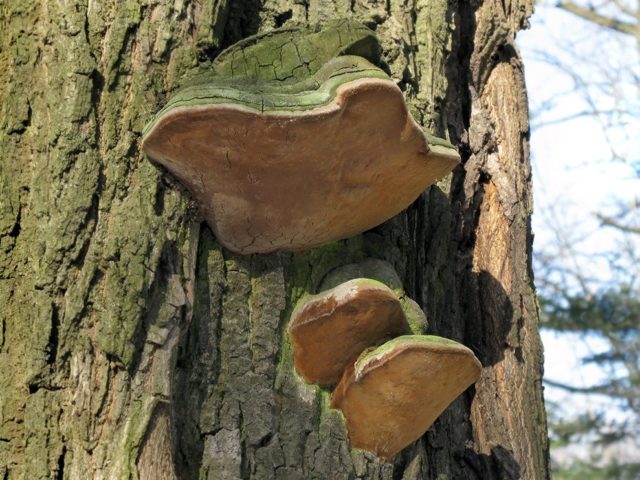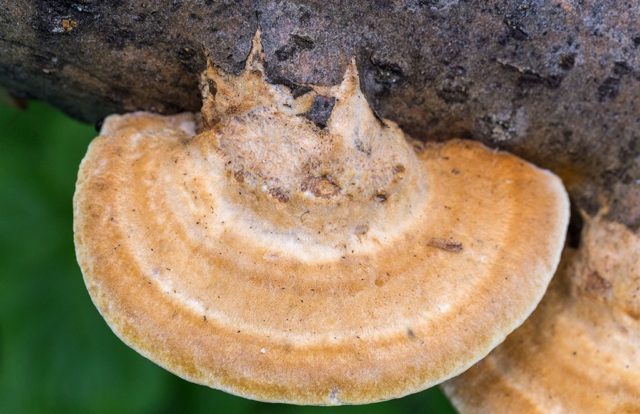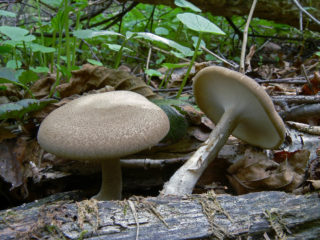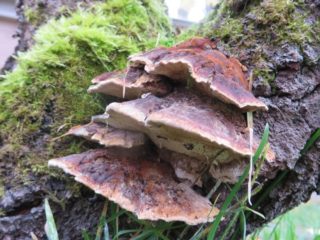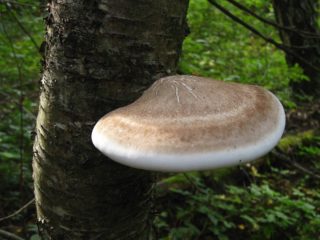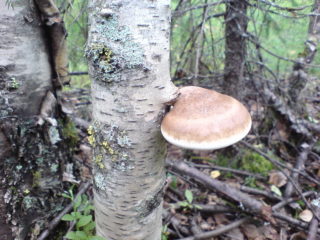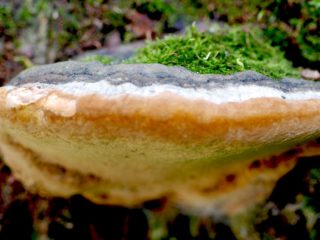Content
All polypores are tree-dwelling parasites. Scientists know more than one and a half thousand of their species. Some of them are favored by the trunks of living trees, some fruit bodies - decaying hemp, dead wood. The bristly-haired polypore (bristly) of the Gimenochetes family parasitizes deciduous tree species, for example, ash trees.
Description of bristly-haired tinder fungus
This saprophyte has no legs. The cap makes up the entire fruiting body, which is a crescent with dimensions of 10x16x8 cm. Sometimes there are larger species - up to 35 cm in diameter. The red-orange cap darkens over time, turns brown. The surface is velvety, homogeneous, with small hairs, and has a dense structure. The flesh of the parasite is brown, slightly lighter at the surface. In wet weather, it becomes like a sponge, in dry weather it turns into a brittle mass. Large spores are located over the entire surface of the cap, turning dark brown, black.
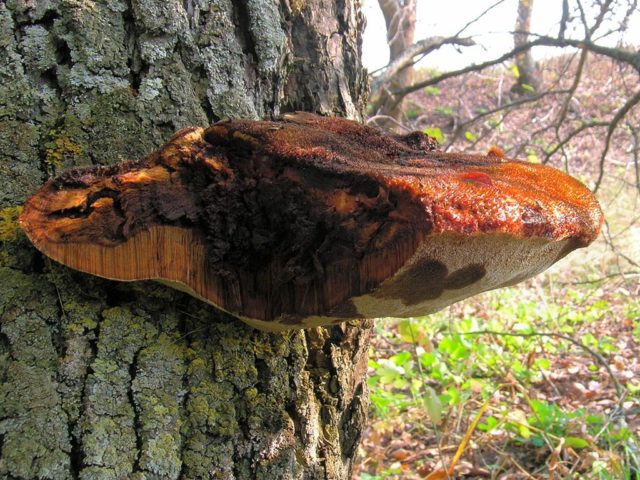
Bristly-haired tinder fungus parasitizes on the body of a living tree
Where and how it grows
This fungus parasitizes on the trunk of deciduous trees growing in the temperate zone of the Northern Hemisphere. He is met on ash, oak, alder, apple, plum. Adhering firmly to the bark, the mushroom sucks out all the juices from it. This inonotus is an annual fruiting body that appears at the end of May and is actively formed from June to September. Most often it grows alone. It is rare to see several of these saprophytes growing together and resembling shingles.
Is the mushroom edible or not
Mycologists consider the bristly tinder fungus not only inedible, but also a toxic fungus. It is not used in medicine like some medicinal species of this family: birch, sulfur-yellow, reisha, larch.
Doubles and their differences
Bristly-haired polypore can be confused with several types:
- Oak polypore similar to the bristly inonotus in shape and size. But it has a tubular layer of brown, rusty color. The structure of the fruit body is dense, by the end of summer it becomes hard, almost wooden. This parasite settles preferably on oak trees. The tough pulp makes it inedible, but in folk medicine, its healing properties are used to treat cancer and heart diseases.
The oak polypore forms hard hooves on the body of the tree
- Fox tinder differs in smaller size: the diameter of the cap is 10 cm, the thickness is 8 cm. At the base of the fruiting body there is a clearly distinguished sandy core with a granular structure. This inedible saprophyte settles preferably on aspens.
The fox tinder fungus forms a grainy sandy core at the base.
How does bristly tinder fungus affect trees
This species is a parasite that infects the trunk with white core rot. The bark in the affected area becomes yellow. The diseased area can be seen by a yellow-brown stripe separating it from healthy areas of the trunk or branches.
Measures to combat bristly tinder fungus
The bristly-haired species sometimes settles on apple or pear trees.In this case, it must be cut off so that the spores do not spread over the section of the tree: they ripen by the end of June. If this has already happened, then the tree is not just chopped, but uprooted, and then burned so that there are no parasite spores left on the site.
Conclusion
The bristly-haired polypore can be called the orderly of the forest, despite the parasitic lifestyle. It settles on wind-broken, dead trees and speeds up the process of their decomposition.
